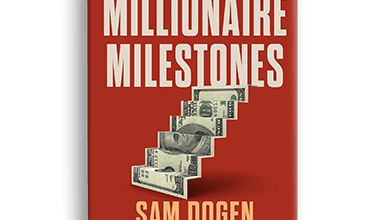Stagflation Is Worse Than A Recession: Here

Stagflation is a rare and challenging economic condition where slow or stagnant growth, high unemployment, and persistent inflation occur simultaneously. Typically, inflation rises when an economy is expanding and demand is strong, while recessions tend to bring lower inflation due to weaker demand. Stagflation defies this pattern, making it particularly difficult to address with traditional economic policies.
What makes stagflation worse than a recession is the combination of economic stagnation and rising prices, creating a policy dilemma. In a typical recession, central banks can lower interest rates and increase government spending to stimulate growth since inflation is usually low.
However, in a stagflationary environment, inflation remains high despite weak economic growth, making such stimulus measures risky as they could further fuel inflation. This limits policymakers’ ability to tackle both issues effectively.
Additionally, stagflation erodes purchasing power, weakens consumer and business confidence, and prolongs economic hardship. Unlike a normal recession—where falling demand typically leads to lower prices—stagflation presents a double burden: higher living costs while wages and job opportunities decline.
A Historical Example Of Stagflation
A historical example of stagflation occurred in the 1970s when oil supply shocks and poor monetary policies led to rising energy prices, high unemployment, and persistent inflation. The Federal Reserve eventually had to raise interest rates sharply to control inflation, triggering a deep recession.
Unfortunately, current economic conditions suggest we may be heading toward stagflation. Increased tariffs on imported goods, along with a rising risk of recession in the next 12 months, are contributing to economic uncertainty. And when people are uncertain, they stop spending.
While the wealthiest individuals and policymakers can weather the downturn more easily, many average Americans could feel the squeeze. If you lose your job during stagflation, you may never financially catch up to your peers. Hence, we need to find ways to prepare.

Key Features of Stagflation
- Slow or Negative Economic Growth – GDP growth is weak, or the economy is contracting.
- High Unemployment – Job losses or a sluggish labor market despite rising prices.
- Persistent Inflation – Prices for goods and services continue to rise, eroding purchasing power.
Things To Do To Survive Stagflation
With expectations for higher prices and slower economic growth, here are some suggestions to survive an upcoming period of stagflation.
For background, I worked in finance for 13 years at Goldman Sachs and Credit Suisse, got my MBA from Berkeley, and retired in 2012 at age 34 with about $3 million. I helped kickstart the modern-day FIRE movement in 2009 when I started Financial Samurai. Everything here is written based off firsthand knowledge and experience. ‘
Join 60,000+ others and sign up for my free weekly newsletter if you want to achieve financial independence sooner. Also pick up a copy of my upcoming book, Millionaire Milestones: Simple Steps To Seven Figures if you want to build more wealth than 93% of the population and live more free. I am also the WSJ bestselling author of Buy This Not That.
1) Fix Everything You’ve Been Delaying Now And Stock Up
As stagflation looms and prices for everything, from food to automobiles, are expected to rise, it’s wise to stock up on essential items now. Additionally, addressing any outstanding repairs or upgrades on your most important assets—your house and car—will help you avoid higher costs down the road.
If you own a car, particularly a used one out of warranty, it may soon become one of your largest ongoing expenses. Take care of essential maintenance now, such as replacing the brakes and rotors, battery, belts, filters, tires, fuel pump, and anything else that needs attention.
For your home, consider replacing major appliances like your water heater or furnace, which can be expensive to fix or replace if they break down during stagflation. It may be finally time to fix your fogged out windows or get a new roof as well.
Additionally, your health should not be overlooked. If your insurance premiums are expected to rise, it might be beneficial to schedule medical procedures or check-ups now, especially if they can be done before higher deductibles or out-of-pocket costs kick in. Just make sure you lock down a life insurance policy before seeing the doctor. Otherwise, your life insurance premiums may get jacked up.
Whatever repairs or upgrades you’ve been putting off, now is the time to address them. By taking action, you can avoid the financial strain of needing urgent fixes when prices are elevated and hope to be in a better position when your wealth or the economy recovers.
Suggestion: If you’re looking for an affordable life insurance policy, check out PolicyGenius. It provides real, customized quotes all in one place, making it easy to compare options. During the pandemic, my wife and I secured matching 20-year term policies and breathed a huge sigh of relief after finding much higher quotes elsewhere. With two young kids and a mortgage, renewing our life insurance was a no-brainer for peace of mind.
2) Maintain 6-12 Months of Living Expenses in Cash
Stagflationary periods often coincide with persistent market downturns and elevated costs of living. The key is to ensure you have enough cash reserves to avoid selling assets at depressed prices.
Money market funds are currently yielding around 4%, while some Treasury bonds offer roughly 4.3%. Holding cash in high-yield accounts provides a safety net while keeping up with inflation to some degree.

3) Adjust Your Asset Allocation to Reflect Stagflation Risks
In stagflation, both stocks and bonds can suffer as inflation erodes purchasing power while economic stagnation limits earnings growth. Traditional 60/40 portfolios may not be as effective.
Consider increasing exposure to inflation-resistant assets such as commodities, Treasury Inflation-Protected Securities (TIPS), real estate, and high-quality dividend stocks. Historically, hard assets like gold and energy stocks have performed well during stagflationary periods.
4) Clearly Define Your Investment Objectives
Your investment time horizon determines your risk tolerance. If your goals are long-term, you can afford to ride out volatility. However, if you need cash for major expenses soon, you should shift towards more liquid and defensive assets.
Define why you’re investing, whether it’s for retirement, real estate, or your children’s education, and align your portfolio accordingly. The clearer your reasons, the more courage you’ll have to stay the course.

5) Strengthen Workplace Relationships and Job Security
Stagflation often leads to layoffs as companies struggle with higher costs and lower revenue. Strengthening relationships with managers and colleagues can help you stay employed. Proactively add value to your organization, seek training opportunities, and remain adaptable.
If there’s ever a time to be the first one in and last one out, now is the time! If you get laid off during a stagflation period, you might not ever be able to catch up financially to your peers.
6) Diversify Your Income Streams
With rising unemployment and eroding wages, relying solely on a paycheck is risky. Build alternative income sources, including side hustles, rental income, dividends, and freelancing opportunities.
In stagflation, businesses and individuals cut discretionary spending, so focus on recession-proof industries like healthcare, utilities, and essential services.

7) Collect Outstanding Debts And Invest In Credit Funds
Economic stagnation increases the risk of defaults. If you’ve lent money to friends, family, or businesses, prioritize collecting before financial conditions worsen.
Additionally, consider investing in private credit funds or short-term debt instruments that offer higher yields while compensating for inflation risk. Instead of letting inflation and higher interest rate hurt you, take advantage.
8) Stay Ahead of Tenant Issues if You Own Rental Properties
Landlords may face more challenges in stagflation, as renters struggle with rising living costs. Stay proactive by maintaining good relationships with tenants, adjusting rent policies if necessary, and ensuring occupancy remains stable. High interest rates may increase rental demand, but economic hardship could lead to delayed payments or vacancies.
If you’re a tenant, your landlord may be facing pressure to raise rents due to their own rising costs. If you’ve neglected any conditions in your lease, now is the time to address them. Taking care of these issues proactively will help you avoid giving your landlord a reason to increase your rent more than necessary.

9) Lower Your Safe Withdrawal Rate if Retired
If you rely on investment withdrawals for living expenses, reassess your safe withdrawal rate. A fixed 4% withdrawal strategy might not be sustainable in stagflation. Instead, consider a dynamic approach, such as withdrawing a percentage of portfolio gains while maintaining flexibility in spending habits.
Additionally, exploring part-time work or consulting can help offset inflation’s impact on your wealth. You want to secure such part-time work ASAP before the flood of layoffs begin.
10) Consider Retiring During Stagflation
Stagflation can be an opportune time to leave the workforce if your finances are solid. With stagnant wages and weak job growth, the opportunity cost of quitting is lower. If you’ve built a robust investment portfolio, taking a break from the workforce may make sense.
As asset values recover post-stagflation, your purchasing power and wealth may grow. In fact, retiring in a bear market can be more advantageous than retiring in a bull market. If you retire during a downturn, your finances are already positioned at lower valuations, giving you a higher likelihood of benefiting from future market gains as economic conditions improve.

11) Find a Stronger Job or Employer Before the Economy Worsens
If your company struggles with high input costs and declining profitability, layoffs or pay cuts may be on the horizon. Consider switching to a more resilient employer in a stronger industry before economic conditions deteriorate further. It’s much easier to secure a job while you’re still employed rather than during a deep downturn.
If you’re considering a job change, aim to negotiate a layoff with a severance package. The key challenge is securing a new offer with a delayed start date, giving you time to finalize your severance. If successful, you can effectively double your income by collecting both severance pay and earnings from your new job.

What I’m Doing During This Round of Stagflation
Since I don’t have a traditional job, I’m not worried about being laid off. Instead, I’m focused on investing for my children through their 529 plans, Roth IRAs, and custodial investment accounts. I firmly believe that in 10 years, we’ll be glad we made these financial moves today.
Beyond investing, I’m prioritizing enjoying life more and working less. With the Return on Effort declining, there’s little point in grinding away only to watch investments struggle. It’s ironic, however, periods of stagflation can make a person more free. When the financial incentive is taken away, will you still enjoy doing what you’re doing?
I’m also dedicating more time to improving my real estate portfolio, as real estate tends to benefit from stagflation with rising rents and property values. Money tends to exit funny money stocks and finds its way to tangible assets (look how well gold is performing). After underperforming since 2022, it’s finally time for real estate to shine over stocks.
To maximize my holdings, I’ll be tackling maintenance projects like power washing, painting, landscaping, and upgrading fixtures across my rental properties. It feels good to take action during difficult times. My plan is to hold onto all but one rental property for at least the next five years, as the trend is turning upward.
I thought Trump would provide a boost to real estate given his real estate background. However, I didn’t expect Trump’s trade wars to ignite another real estate boom—but here we are! Rising home prices will price out more people, thereby hurting more people’s prospects for wealth creation. On the other hand, if you own real estate, then you almost welcome the chaos and uncertainty.

Survive Long Enough Until Things Eventually Recover
Stagflation requires a slightly different playbook than a traditional recession. While economic growth stalls, inflation continues eating away at your savings and income.
By preparing in advance, diversifying your investments, and fortifying your financial security, you can better navigate this challenging economic environment and emerge in a stronger position when conditions improve.
The key is to survive long enough until the good times eventually return. So many people get left behind but you will not be one of those people.
Readers, what steps are you taking to prepare for stagflation? Are there any specific assets you’re eyeing to take advantage of during this downturn? What other actions are you taking today to benefit your future self?
Outperform During Stagflation By Owning Real Estate
If you prefer not to take out a mortgage and buy physical real estate, you can invest in private real estate funds through Fundrise. While commercial real estate has underperformed stocks since 2022, this trend is likely to reverse due to valuation differences and a shift toward hard assets. With a minimum investment of just $10, it’s easy to dollar-cost average into these funds.

Fundrise is a long-time sponsor of Financial Samurai and I’ve invested about $300,000 in Fundrise so far to diversify my expensive San Francisco real estate investment holdings.
Safeguard Your Financial Future With My New Book
Finally, if you want to build more wealth than 93% of Americans while securing your financial future, grab a copy of Millionaire Milestones: Simple Steps to Seven Figures. I’ve distilled over 30 years of finance experience into a guide designed to help you achieve financial freedom and gain the confidence to live life on your terms.

Most people don’t read—especially books about building wealth and living a life of meaning. Yet, many struggle with financial insecurities that keep them working their entire lives. Fortunately, you’re not most people as you regularly take action to improve.
Stagflation Is Worse Than A Recession is a Financial Samurai original post. All rights reserved. Protect your future and sign up for my free weekly newsletter. My goal is to help you achieve financial freedom sooner, rather than later.
Financial Samurai began in 2009 and is the leading independently-owned personal finance site today. Everything is written based off firsthand experience and knowledge because money is too important to be left up to pontification.




